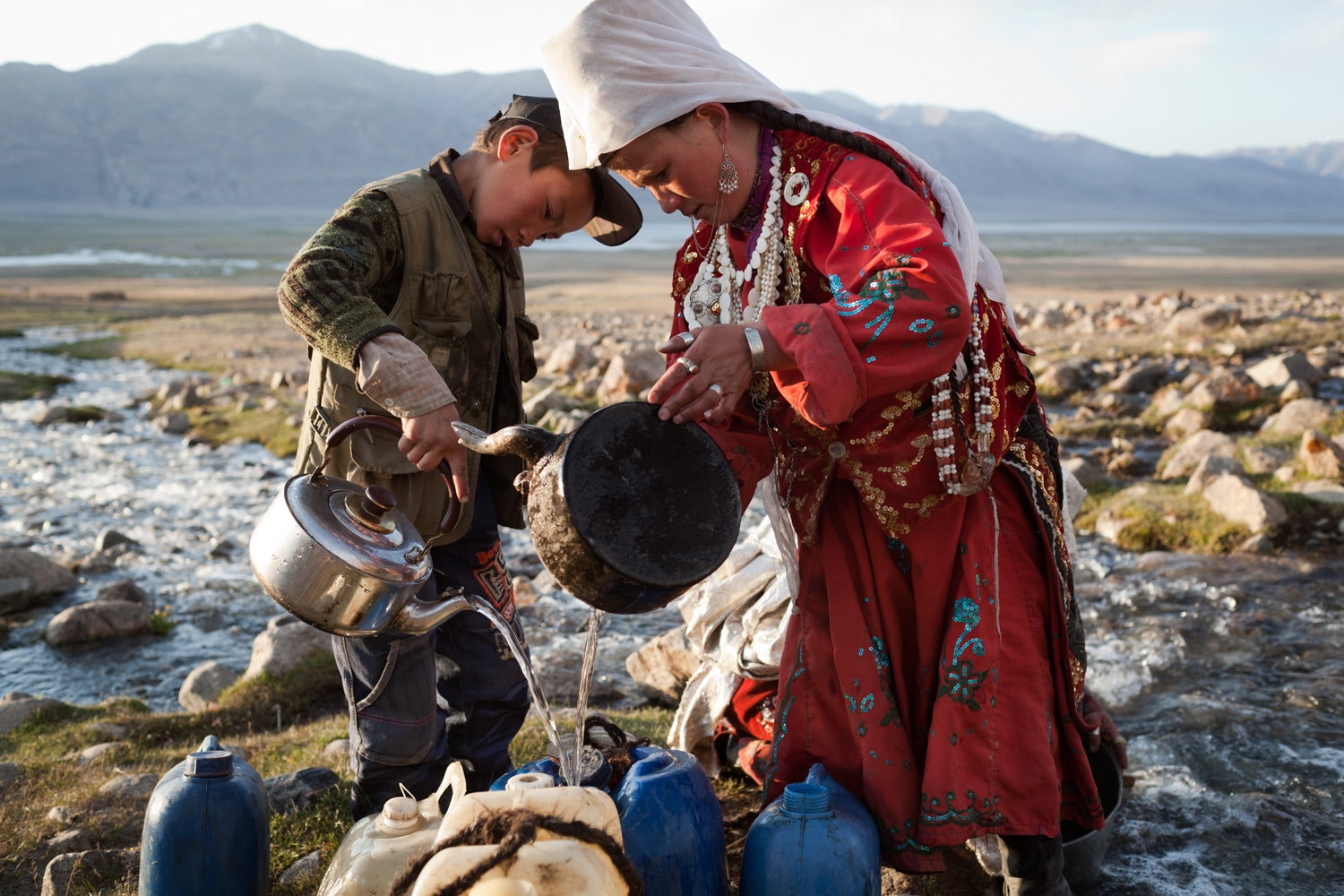THEODORE KAYE: KYRGYZ EXODUS


Theodore Kaye’s background is as fascinating as his photo stories. He grew up in China, India and Indonesia and has had the opportunity to study languages like Uzbek and Farsi. His work Kyrgyz Exodus unveils political tension, geographical hardship and the lives of a semi-nomad community in an exodus to Eastern Turkey. Their lives have changed significantly and the photographs depict the change of their traditions as they adjust to a new way of life.

Your personal work is based in the ‘stans of Central Asia. What is your personal interest in this area of the world?
It is a melting pot of Turkish, Persian, Mongolian and Russian influences, closed for decades to the world within the Soviet Union - it’s hard not to be attracted to such a fascinating region! After stumbling through post-Soviet Central Asia on a university travel grant, I developed an academic interest in the region and studied Farsi and Uzbek with an eye towards getting a Master’s degree in Eurasian studies.

That’s really interesting and what role did photography play in all of these?
My parallel interest in photography won over when I landed a job as a staff photographer at a geographic magazine. When I went freelance after a few years, I saw an opportunity to merge my interests and moved back to Tajikistan. Central Asians are wonderfully welcoming and as I’m half-Asian, I’m regularly mistaken for a ‘local.’

How did you get to this story?
Straight out of university, I relocated to Dushanbe, Tajikistan where I studied languages and worked at a local university. While traveling to the Pamir region of eastern Tajikistan, there’s a section of the Pamir highway where you can look across a river, which marks the border, into Afghanistan. The contrast between life on either side of the river is remarkable. On the Tajikistan side, you have Land Cruisers zipping along asphalt roads, linking distant cities while the Afghan side still features men ferrying goods by donkey between villages on paths hewn into cliff sides. This river marked the edge of the Soviet empire, a very closely guarded border, and even after this has become a national border, the Afghan side is largely unaffected by the decades of Soviet influence and modernization.

What specifically drew you into the Kyrgyz focus?
Part of what intrigued me about the Afghan Kyrgyz story was this divide in history. The contrast is even more pronounced in their case, due to the remote location of the Wakhan – a small finger of Afghanistan’s land locked between the closed borders of China, Pakistan and Tajikistan. This particular group of Kyrgyz has been largely removed from outside influences. The closest town is a 3 to 4-day walk followed by a full day’s drive on terrible roads.

The images of the Kyrgyz in the Afghan Wakhan depict such a different life if you see it from a Western point of view. How is the life of a nomad community?
The original Kyrgyz that settled in the Afghan Wakhan in 1920s were escaping the changes brought by Stalinization in present-day Kyrgyzstan. In other words, this particular group of Kyrgyz chose to settle where they would be left alone, an isolation that was only furthered by the way Afghanistan’s borders were drawn up.
The Kyrgyz in the Wakhan are semi-nomads, living at 4,000 meters above sea level, living through harsh winters and brief summers. While the Kyrgyz there have a pretty harsh life – high infant mortality, limited education and options for the future, low life expectancy – everyone I met was extremely warm, resourceful and proud. They are quick to point out their wealth, as many families own hundreds of valuable livestock, which they trade with neighboring parts of the country for other goods, including solar panels, cell phones and TVs. Some of the men I spoke with noted that if they left, they would be truly poor, starting over with no possessions, land or skills, while in the Wakhan, they have a secure livelihood and way of life.

So, why were they leaving for?
In 1978, following news of a military coup in Kabul, 1,300 of the Kyrgyz decided to leave the Wakhan with their leader, Haji Rahman Kul, fearing that the impending Soviet invasion would limit freedom to practice their way of life and their religion. Escaping over the Hindu Kush into Pakistan and eventually re-settling in Turkey was seen as a way of holding onto their identity for the fiercely independent Kyrgyz. Those that stayed behind either did not believe in risking the dangerous journey – as hundreds did not survive the trip or the subsequent years in refugee camps – or were settled elsewhere on the grasslands, too far away to take part in the sudden decision.

And how is their life in Eastern Turkey nowadays?
After a few years in Pakistani refugee camps, the Kyrgyz group was invited to resettle in Eastern Turkey which at the time was undergoing a resurgence of pan-Turkic pride. The site of the original resettlement was in Eastern Turkey, an area that was supposed to approximate the climate and landscape in the Wakhan but many of the old practices like yak-rearing or wide grazing areas did not translate well. The group has gone from nomadic to sedentary, and particularly with the 2nd generation since the migration, many have moved to larger cities like Ankara and Istanbul to take up trades in leatherwork and construction. From the original 900 or so that reached Turkey in the early 1980s, the population is now roughly at 5000.

It seems like global change has impacted these communities greatly..
Yes, while the Kyrgyz remaining in the Wakhan practice a way of life quite similar to what was lived 100 years ago, the Kyrgyz in Turkey, especially the youth, are very much in the modern age, fluent in Facebook, Instagram and Turkish culture. Intermarriage between Kyrgyz men and Turkish or Kurdish women is not uncommon. Some of the elders I spoke with worried about these changes and the growing generation gap. Having undertaken a sequence of extreme migrations in the past century to preserve their identity, the irony of ending the journey in gradual cultural assimilation is not lost on some.
Article by: Laura Rodriguez Castro
- Tags: Interviews

